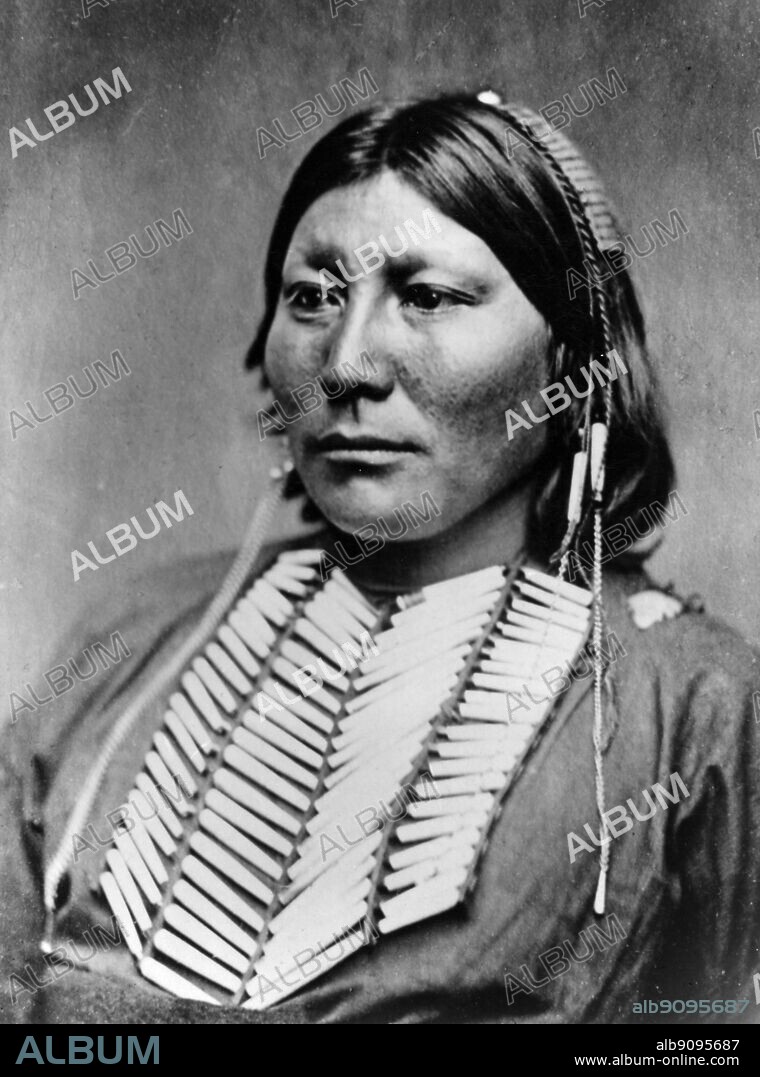alb9095687
White Horse . Kiowa chief. Noted chief and raider 1870. WHITE HORSE (?-1892). White Horse (Tsen-tainte), a Kiowa chief during the second half of the nineteenth century, was noted among the tribe for his daring. Even in his teens he showed remarkable adeptness as an apprentice warrior. Due to his unusual strength, he became an outstanding horseman, able to snatch up a child while at a gallop. In the summer of 1867 White Horse joined a large party of Comanches and Kiowas on a revenge raid against the Navajos, who were then living in exile on the reservation near Fort Sumner, New Mexico. On the Canadian River near the Texas-New Mexico line, White Horse and some of his followers killed and scalped a Navajo warrior. Shortly afterward, the war party attacked a Navajo village on the Pecos River. During the initial charge, White Horse seized a young Navajo boy by the hair and set the boy on his mount behind him. While Navajo warriors pursued the retreating invaders, killing three of them, White Horse escaped with his captive back to the Kiowa camp and subsequently adopted the boy as his son.

|
Añadir a otro lightbox |
|
Añadir a otro lightbox |



¿Ya tienes cuenta? Iniciar sesión
¿No tienes cuenta? Regístrate
Compra esta imagen.
Selecciona el uso:

Descripción:
Traducción automática: Caballo blanco . jefe Kiowa. Destacado jefe y raider 1870. CABALLO BLANCO (?-1892). White Horse (Tsen-tainte), un jefe kiowa durante la segunda mitad del siglo XIX, se destacó entre la tribu por su audacia. Incluso en su adolescencia mostró una notable destreza como aprendiz de guerrero. Debido a su fuerza inusual, se convirtió en un destacado jinete, capaz de arrebatar a un niño al galope. En el verano de 1867, White Horse se unió a un gran grupo de comanches y kiowas en una incursión de venganza contra los navajos, que entonces vivían en el exilio en la reserva cerca de Fort Sumner, Nuevo México. En el río Canadian, cerca de la línea entre Texas y Nuevo México, White Horse y algunos de sus seguidores mataron y arrancaron el cuero cabelludo a un guerrero navajo. Poco después, el grupo de guerra atacó una aldea navajo en el río Pecos. Durante la carga inicial, White Horse agarró a un joven navajo por el cabello y lo colocó en su montura detrás de él. Mientras los guerreros navajos perseguían a los invasores en retirada y mataban a tres de ellos, White Horse escapó con su cautivo de regreso al campamento de Kiowa y posteriormente adoptó al niño como su hijo.
White Horse . Kiowa chief. Noted chief and raider 1870. WHITE HORSE (?-1892). White Horse (Tsen-tainte), a Kiowa chief during the second half of the nineteenth century, was noted among the tribe for his daring. Even in his teens he showed remarkable adeptness as an apprentice warrior. Due to his unusual strength, he became an outstanding horseman, able to snatch up a child while at a gallop. In the summer of 1867 White Horse joined a large party of Comanches and Kiowas on a revenge raid against the Navajos, who were then living in exile on the reservation near Fort Sumner, New Mexico. On the Canadian River near the Texas-New Mexico line, White Horse and some of his followers killed and scalped a Navajo warrior. Shortly afterward, the war party attacked a Navajo village on the Pecos River. During the initial charge, White Horse seized a young Navajo boy by the hair and set the boy on his mount behind him. While Navajo warriors pursued the retreating invaders, killing three of them, White Horse escaped with his captive back to the Kiowa camp and subsequently adopted the boy as his son.
Crédito:
Album / TopFoto
Autorizaciones:
Modelo: No - Propiedad: No
¿Preguntas relacionadas con los derechos?
¿Preguntas relacionadas con los derechos?
Tamaño imagen:
4330 x 5836 px | 72.3 MB
Tamaño impresión:
36.7 x 49.4 cm | 14.4 x 19.5 in (300 dpi)
 Pinterest
Pinterest Twitter
Twitter Facebook
Facebook Copiar enlace
Copiar enlace Email
Email
